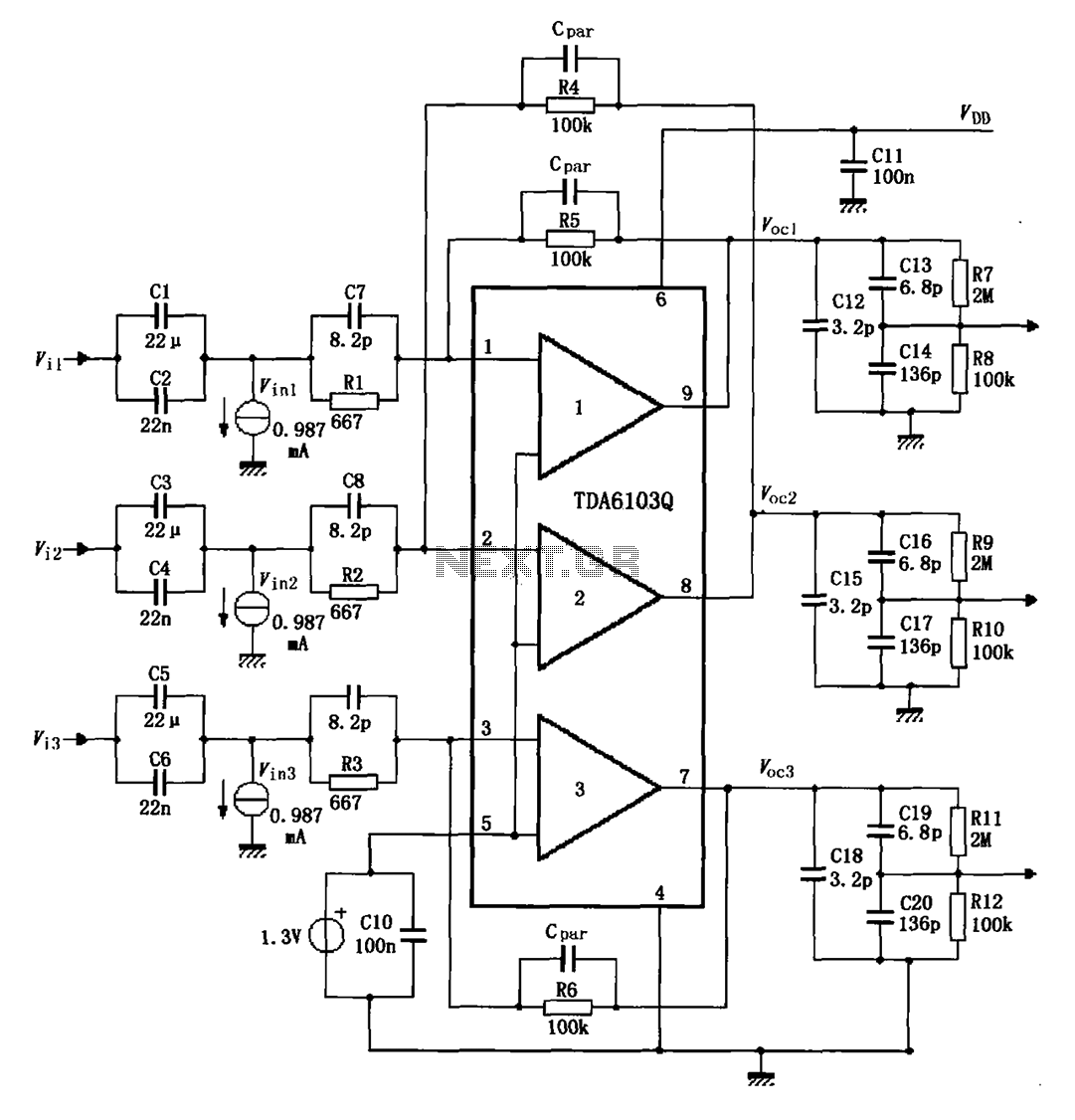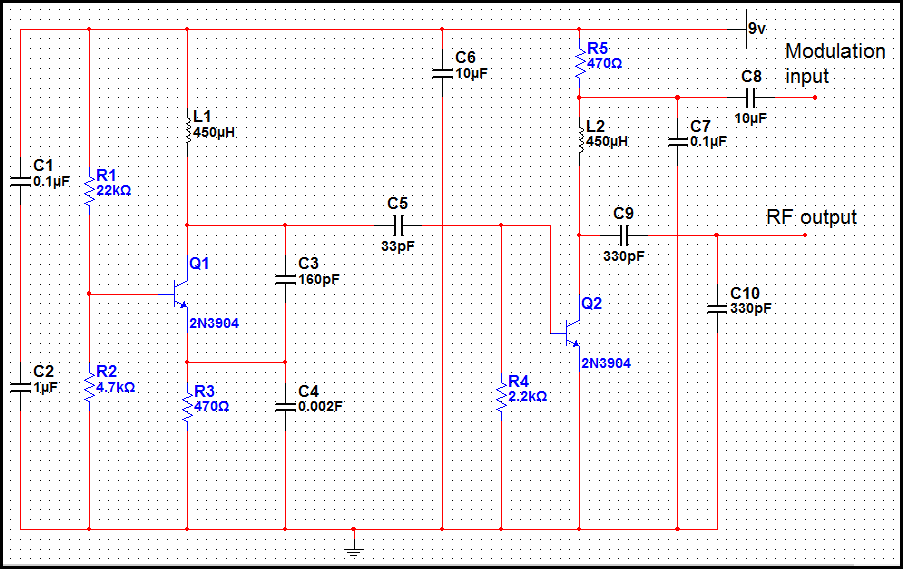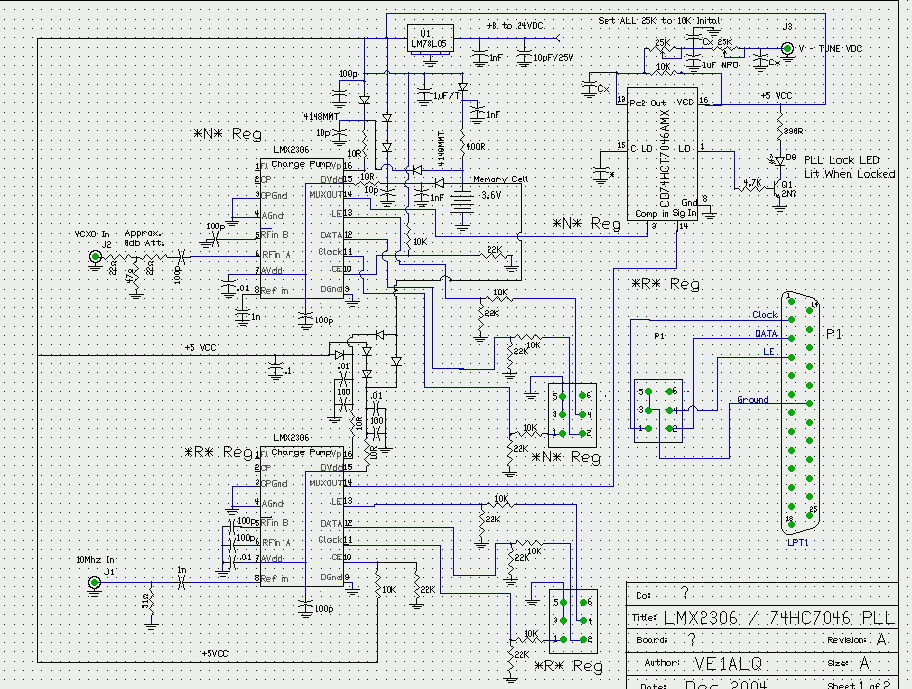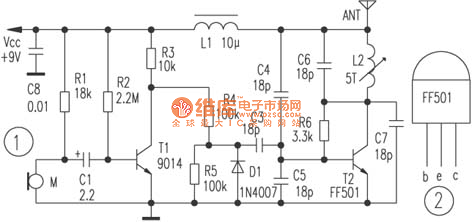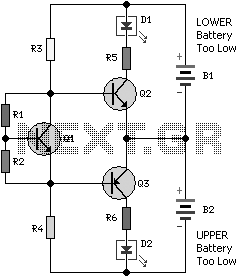
3 band equalizer circuit
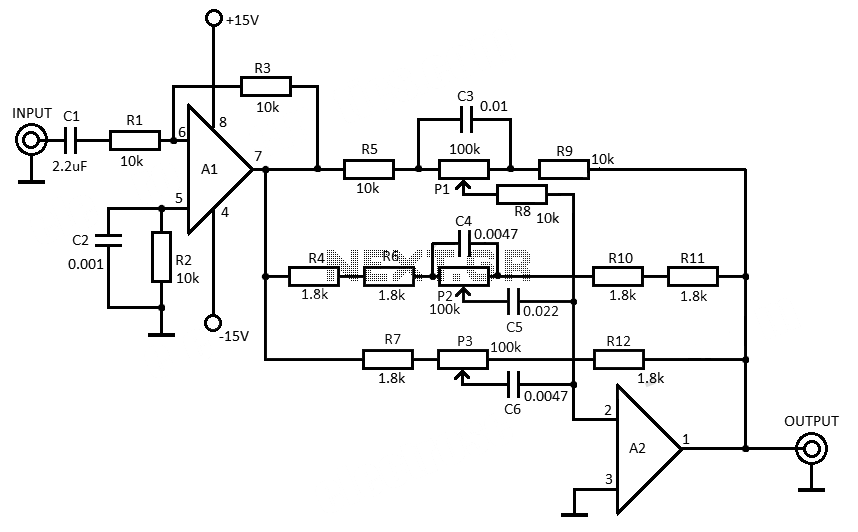
This 3-band equalizer circuit is an active filter network designed to adjust bass, midrange, and treble audio frequencies. It utilizes the LM833 operational amplifier from National Semiconductors, which is known for its very low noise figure and wide frequency response.
The 3-band equalizer circuit employs the LM833 op-amp to create three separate filter stages, each tailored to enhance or attenuate a specific frequency range. The bass filter typically operates within the range of 20 Hz to 250 Hz, the midrange filter covers approximately 250 Hz to 4 kHz, and the treble filter is effective from 4 kHz to 20 kHz. Each filter stage can be adjusted using potentiometers, allowing for precise control over the audio output.
The circuit configuration involves using resistors and capacitors to set the cutoff frequencies for each band. The feedback network around the LM833 op-amp is designed to provide the desired gain and frequency response. For instance, the bass filter can be configured with a higher gain to amplify low frequencies, while the treble filter can be set with a lower gain to avoid distortion of high frequencies.
Power supply considerations for the LM833 op-amp should include a dual supply voltage, typically ±15 V, to ensure optimal performance. Proper decoupling capacitors should be placed close to the power pins of the op-amp to minimize power supply noise and enhance stability.
Additionally, the output of each filter stage can be mixed together using a summing amplifier configuration, allowing the user to achieve a balanced overall sound. Careful layout of the circuit board is essential to minimize interference and maintain signal integrity, particularly in high-frequency applications. Overall, this 3-band equalizer circuit provides a versatile solution for audio signal processing, enabling users to tailor their listening experience to personal preferences.This 3 band equalizer circuit is an active filter network for bass, mid and high audio ranges. It is designed around the LM833 opamp from National Semiconductors. This opamp IC has the following charactersistics: very low noise figure, wide.. 🔗 External reference
The 3-band equalizer circuit employs the LM833 op-amp to create three separate filter stages, each tailored to enhance or attenuate a specific frequency range. The bass filter typically operates within the range of 20 Hz to 250 Hz, the midrange filter covers approximately 250 Hz to 4 kHz, and the treble filter is effective from 4 kHz to 20 kHz. Each filter stage can be adjusted using potentiometers, allowing for precise control over the audio output.
The circuit configuration involves using resistors and capacitors to set the cutoff frequencies for each band. The feedback network around the LM833 op-amp is designed to provide the desired gain and frequency response. For instance, the bass filter can be configured with a higher gain to amplify low frequencies, while the treble filter can be set with a lower gain to avoid distortion of high frequencies.
Power supply considerations for the LM833 op-amp should include a dual supply voltage, typically ±15 V, to ensure optimal performance. Proper decoupling capacitors should be placed close to the power pins of the op-amp to minimize power supply noise and enhance stability.
Additionally, the output of each filter stage can be mixed together using a summing amplifier configuration, allowing the user to achieve a balanced overall sound. Careful layout of the circuit board is essential to minimize interference and maintain signal integrity, particularly in high-frequency applications. Overall, this 3-band equalizer circuit provides a versatile solution for audio signal processing, enabling users to tailor their listening experience to personal preferences.This 3 band equalizer circuit is an active filter network for bass, mid and high audio ranges. It is designed around the LM833 opamp from National Semiconductors. This opamp IC has the following charactersistics: very low noise figure, wide.. 🔗 External reference
